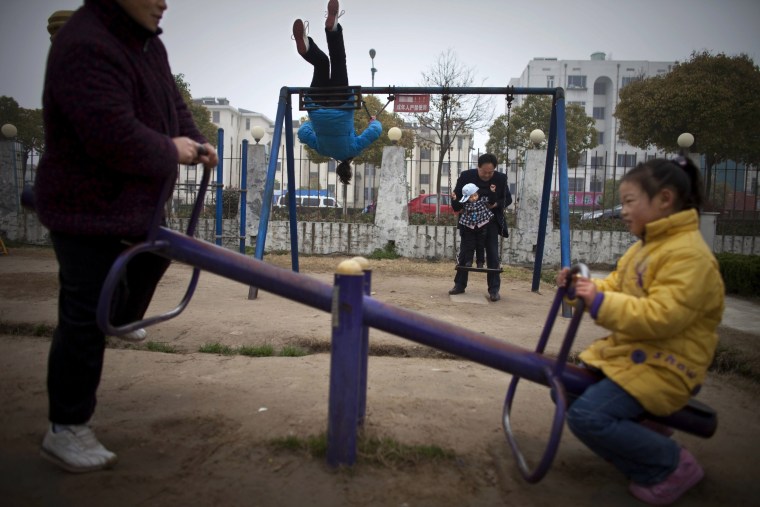China announced Thursday it was reversing its one-child policy, a controversial rule implemented 35 years ago aimed at taming its exploding population.
While the policy has been blamed for forced sterilizations and abortions, China's gender imbalance, and child trafficking, the government's decision to end it is largely symbolic. Here's what you need to know about the change, which will allow all married couples to now have two children and is expected to be approved by the country's parliament in March.
It didn't come out of nowhere.
At 1.4 billion people, China is the world's most populous country. The one-child policy was introduced in 1979 with the goal of relieving the strain the population was putting on demands for water and other resources. According to the government, about 400 million births have been prevented thanks to the one-child rule.
The policy has been a cornerstone of the Chinese Communist Party, and has had a a huge impact on Chinese society, economy and identity. But exemptions, especially in the last five to ten years, have watered it down.
Related: China Scraps One-Child Policy, Will Allow 2 Kids Per Couple
Rural residents and ethnic minorities have long been allowed to have more than one child without penalty — if their firstborn was female. More recently, in 2013, couples who were each single children themselves were allowed to have two children.
As the middle class expanded and as incomes grew, many couples developed the means to give birth outside China, from as close as Hong Kong to as far as the U.S., spawning the birth tourism industry. In this sense, the Chinese Communist Party's decision to eradicate the one-child policy was long overdue. And the Party was aware.
In 2013, the government announced it was folding the National Population and Family Planning Commission — which supervised the one-child policy — into the Health Ministry. And, just as significantly, the government decided to shift responsibility for demographic planning to China's chief economic planning agency, the National Development and Reform Commission.
It's an economic decision.
Economics is key to understanding why China has decided to forego a longstanding policy that has been, ultimately, too successful: It's resulted in a shrinking population. One of the challenges that has contributed to pressure for the country to transition from a low-end manufacturing giant to a consumer-led economy is because it hasn't been able to sustain a cheap labor pool.
There simply aren't enough young people to reinforce the labor pool for factory work in unskilled jobs.
Second, the aging population there has no safety net. Despite its communist badge, the Chinese government does not look after the elderly.
The burden of taking care of the elderly has fallen squarely on the shoulders of their offspring. With each couple bearing only one child, that child now is solely responsible for caring for both parents instead of sharing the burden with siblings.
It may be irrelevant.
Many couples simply can't afford to have another child. In 2007, NBC News interviewed couples for a story about family planning and asked them whether they would want to have more than one child. Many said they did not. Raising offspring in cities like Beijing or Shanghai was already very expensive, and those parents wanted to give the very best of everything to the one child they had.
Minor relaxing of the policy in 2013 were greeted with a similar response.
“We lack a safe social net to support a family with two children,” Wang Tao, a 35-year-old Beijing native, told NBC News in 2013. “China doesn't provide a pension or free education.”
Demographers said the change might not be able to reverse the declining fertility rate.
"The good news is, it is here. The bad news is, it is too little, too late," Cai Yong, a sociology professor at the University of North Carolina at Chapel Hill, told the Associated Press.
It could impact U.S. adoptions.
China is the biggest source of adoptions for families in the U.S. who are adopting internationally. According to the State Department, from 1999 to 2013, nearly 72,000 babies were adopted into the U.S. from China. Of those adopted, 88.9 percent of the children were female — a reflection of Chinese families' centuries-long preference for sons.
Other countries have clamped down on adoptions to the U.S.: Russia stopped adoptions to the U.S. in 2012, and South Korea has turned its focus to domestic adoption, said Dr. Jane Aronson, CEO of Worldwide Orphans Foundation.
That has created a long waiting list for Chinese babies — American families wait an average of seven years if they want to adopt a healthy infant with no special needs, Aronson said.
The change to China's one-child policy will likely result in even fewer babies available for international adoptions. But, Aronson said, "it could take a long time for that."

